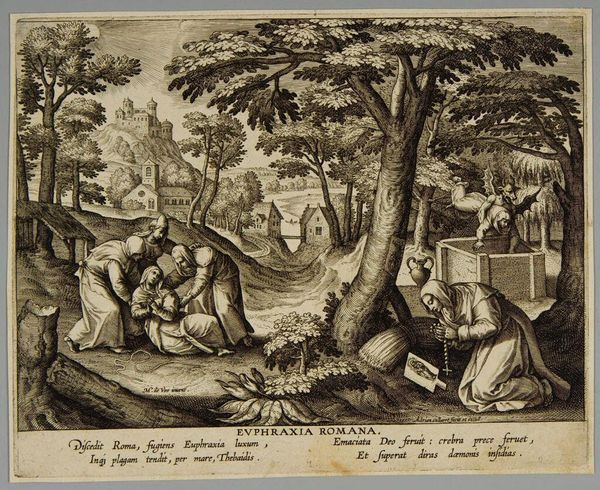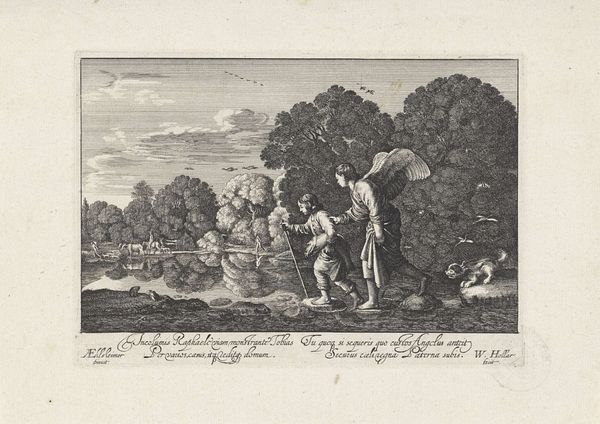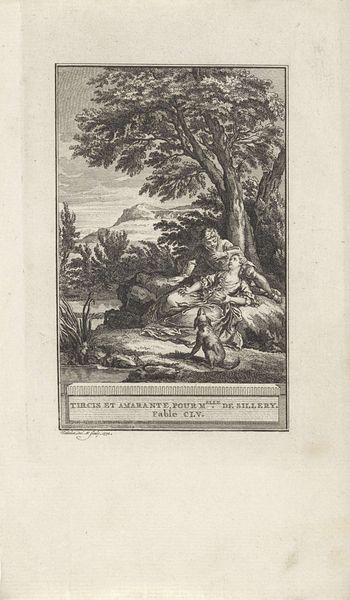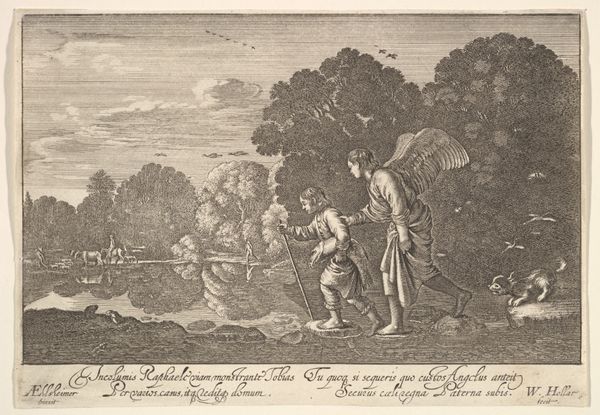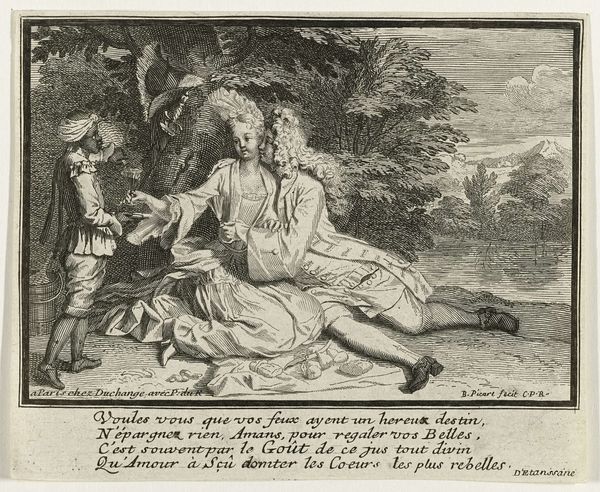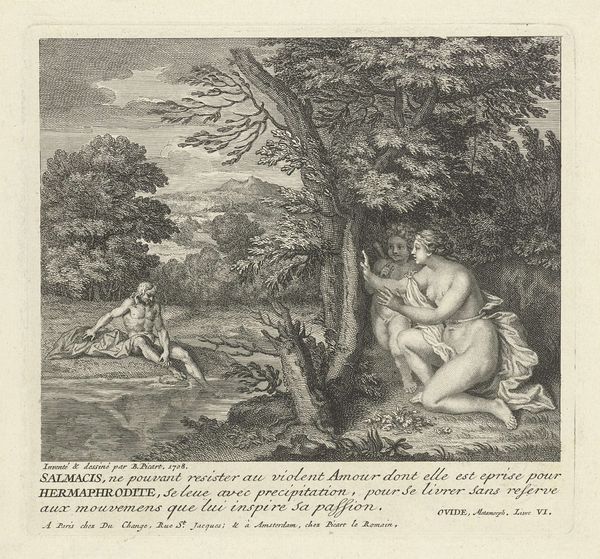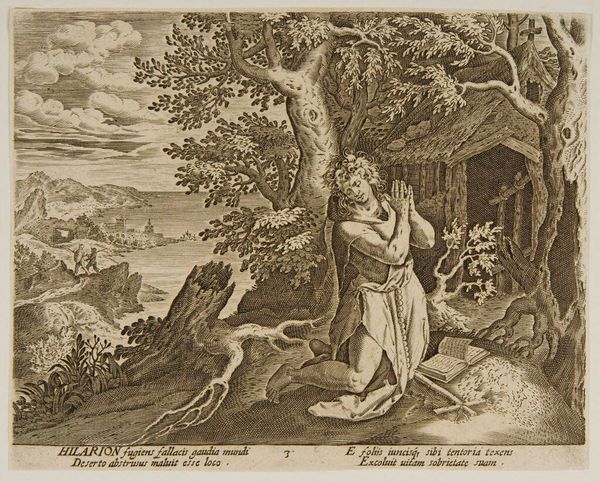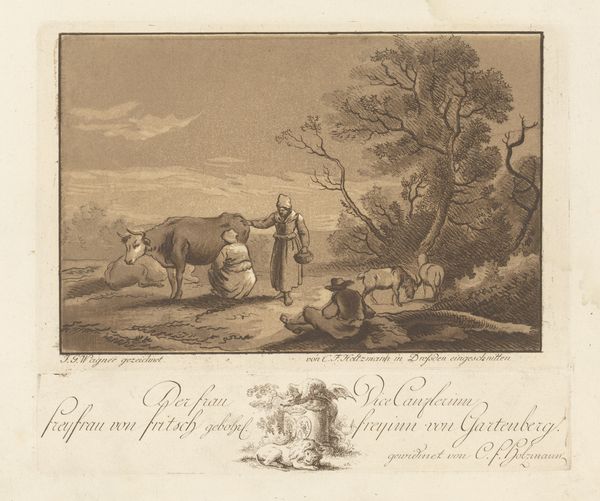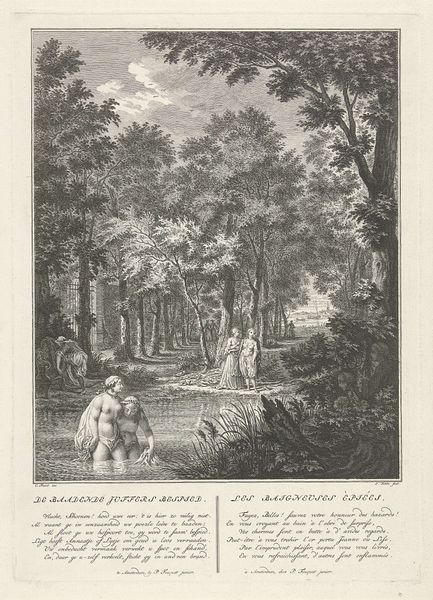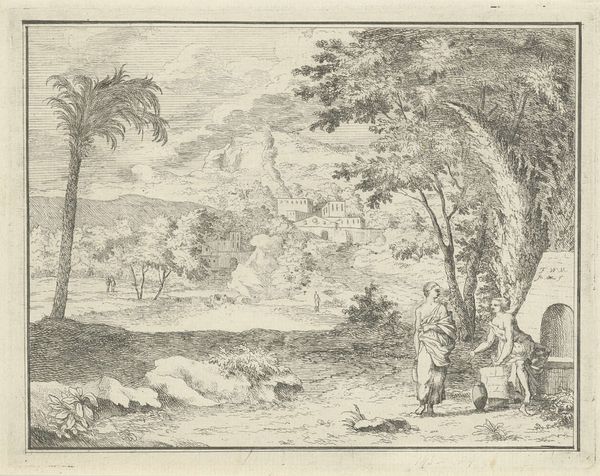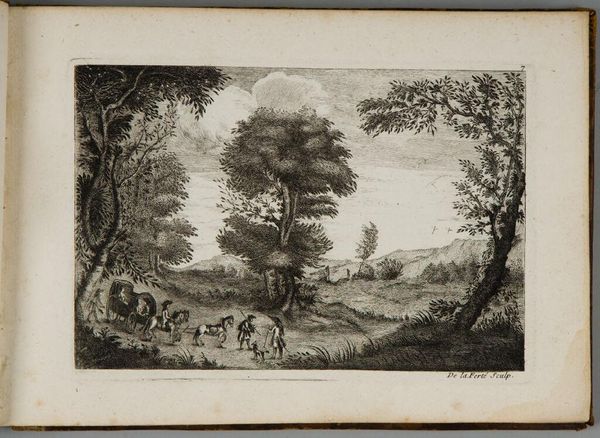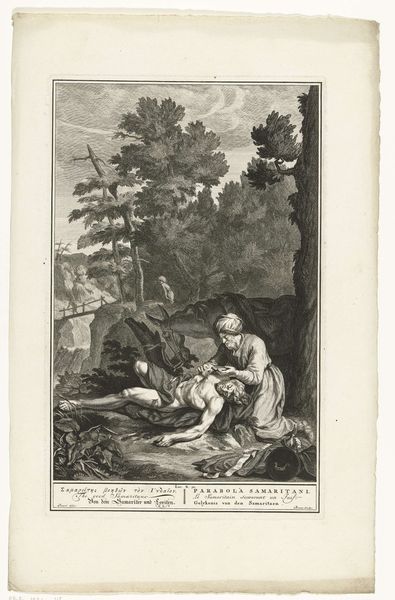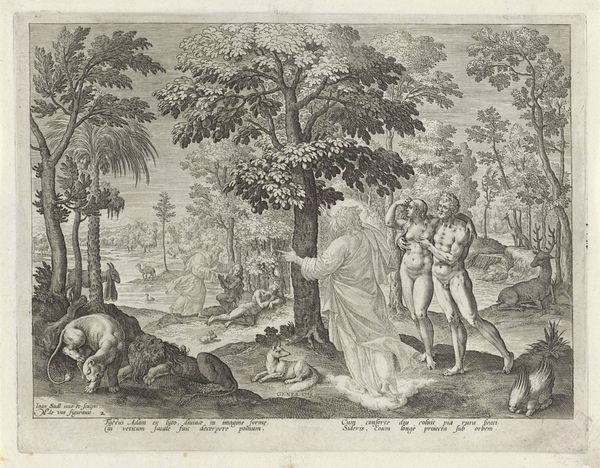
print, engraving
#
baroque
# print
#
landscape
#
figuration
#
history-painting
#
nude
#
engraving
Dimensions: height 204 mm, width 231 mm
Copyright: Rijks Museum: Open Domain
Editor: Here we have "Salmacis en Hermaphroditus" by Magdalena van de Passe, made between 1623 and 1670. It's a print, an engraving to be precise. The composition strikes me as quite dynamic, but also unsettling. What do you see in this piece, considering its historical and symbolic context? Curator: Well, I am immediately drawn to the story being told through the imagery. Notice how the landscape itself seems to be almost complicit in the unfolding drama. The figures are set against a backdrop of both idyllic nature and a looming, darker wooded area, mirroring the dual nature of the myth – beauty and danger, desire and transformation. It reflects the psychological space they inhabit. How do you feel about this symbolic representation? Editor: I guess I see that tension, too. I'm thinking about the choice of depicting this specific moment, right as they're merging. It feels like the artist is exploring the boundaries of identity, and how fluid or fixed those can be. Curator: Precisely! Think about the historical moment as well. This work was created during the Baroque period; a period marked by dramatic flourish and an exploration of intense emotion. The visual language is rich with symbolism, where transformation is a central motif. Van de Passe uses the myth as a powerful metaphor for the transience of the human form and the overwhelming power of love and desire. Does this symbolism come through for you, thinking about memory? Editor: It does now. The story obviously still resonates today, but seeing it through this lens of 17th-century symbolism adds a whole other layer. I guess I hadn't thought of how universal these themes are, constantly reinterpreted. Curator: Absolutely. Each generation finds new meaning within these timeless narratives, reinventing cultural memory. We bring our own anxieties and desires to the surface. Editor: Thank you. I will think of this in future interpretations!
Comments
No comments
Be the first to comment and join the conversation on the ultimate creative platform.
